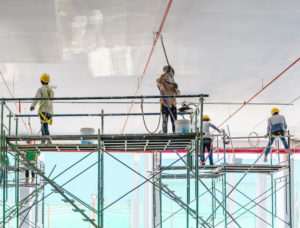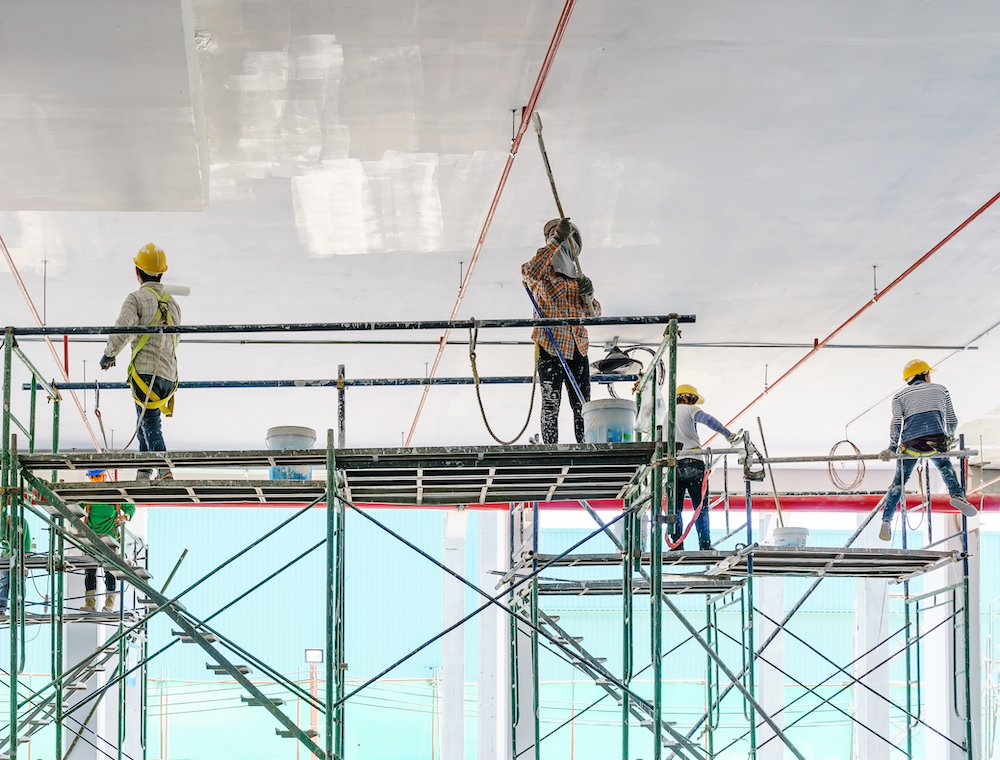
Withholding portions of payment, also known as retainage, is standard industry practice. Given the amount of abuse that can come with such practices, state legislatures have enacted their own statutes and regulations to control this procedure. Without clear guidelines in place, lenders and owners could easily take advantage of lower-tier subs and suppliers. This article will break down the rules and regulations of the California retainage laws.
California retainage laws
Retainage is a contentious topic at best. Many see it as an overly burdensome requirement, while others see it as not only providing incentives but adding assurances that the project will be completed. The approach to regulation of retainage on construction projects varies by state to state. Some are silent, and some only regulate public projects.
California has statutes that govern both private and public projects. Let’s take a look at how retainage is regulated on either type of project.
For a deep dive on retainage:
Private Projects
Retainage on private projects in California is regulated by Ca. Civ. Code §§8810-8822. Unlike the retainage statutes for public projects, retainage is not capped at any certain amount for private projects. Therefore, parties are free to agree to their own retention rates in their contract. The only real legal requirements for retainage on private projects is through the CA Prompt Payment Act.
When does retainage need to be paid?
If the parties do agree to retainage on the project, the timing of payment is still regulated fairly strictly. Owners, who are withholding retainage are required to release these funds within 45 days of the completion of the work. So when exactly does a project become complete?
Thankfully, California takes the guesswork out of it by defining what constitutes completion. Completion occurs when one of the following events occur; (1) actual completion, (2) occupation or use by the owner accompanied by work stoppage, (3) 60 continuous days of work stoppage, or (3) after a notice of cessation of labor is recorded following 30 straight days of work stoppage.
This definition changes a bit if the project will ultimately become public property. In that case, the owner can condition the payment on approval and acceptance of the work by the public entity.
When can retainage be withheld longer?
The only legitimate excuse for withholding retainage payments after they become due is when there is a good faith dispute. This applies to both disputes between owners and prime contractors, and between prime contractors and subs. If such a dispute exists, the paying party is legally allowed to retain up to 150% of the amount of money in dispute.
Now, what constitutes a “good faith” dispute has been a point of contention in California for some time now. It was originally assumed to mean any bona fide dispute. This, however, goes against the purpose of the statutes of facilitating timely payments. If an owner or contractor can withhold payments for whatever reason, this defeats the purpose of the statute. Allowing this would essentially let these higher tier parties use retainage as an interest-free loan, and that just doesn’t work.
After multiple cases attempting to narrow this interpretation, the California Supreme Court recently provided some clarification. This was in the case of United Riggers and Erectors, Inc. v. Coast Iron & Steel Co. The Court declared that the dispute must pertain to the actual retention payments themselves. The purpose of retainage is to provide security in case of any potential mechanics lien or shoddy contractor performance. Once the funds no longer serve that purpose, they should be released. So owners and contractors can no longer withhold retention if the dispute is over additional or unrelated work or payments.
For a detailed look at this decision:
Penalties for the late release of retainage
As stated above, the main regulation of retainage on private projects is through the prompt pay provisions. If absent a good faith dispute as defined above, the withholding of retainage longer than 45 days after completion can lead to some penalties. Specifically, the withheld amount will accrue interest at a rate of 2% a month. And, if the dispute ultimately becomes a full-blown lawsuit, the prevailing party will be awarded court costs and reasonable attorney’s fees.
Public Projects
Retainage on public works projects in California are regulated by the Public Contract Code §§7200, et. seq. These statutes allow for some leeway, but there are strict caps on the amount of retainage allowed and deadlines for the release of those funds.
How much retainage can be withheld on public projects?
The general rule for private projects is that no more than 5% retainage can be withheld from every progress payment. But this isn’t as clear cut as it seems though. There are certain situations where the percentage can be increased. The public entity contracting the project can decide to withhold more if they deem the project to be substantially complex before the bidding begins.
However, this is a bit dicey since there is no real definition of what makes a project substantially complex. Rather, it is decided on a case-by-case basis. If that decision is made, then all of the bid documents must state the retainage rate and the reasons for why the determination was made.
Whatever amount of retainage the public entity decides to withhold, the rate set out in the original contract acts as the maximum limit on the project, which means that any contracts between subcontractors and their subs or suppliers can’t withhold more than that amount. But as always, there is an exception to this; when a contractor or sub was required to post bonds and was either unable or refused to do so. Under these circumstances, the rate of retainage can be more than the original contract, but still can’t exceed 5%.
Reduction of retainage
The public entity may decide to reduce the rate of retainage once the project is 95% complete. The statute states it may be reduced to 125% of the estimated value of the unfinished work, or eliminated. Yet, there is something important that needs to be kept in mind. And that is that reduced retainage is not the same thing as released retainage, regarding payment deadlines.
This was the issue that the court had to deal with in the case of Blois Constr. Inc., v. FCI Flour Parsons. On this particular public works project, the owner decided to stop withholding retainage when the project reached the halfway point. From then on, the owner was sending progress payments in full. The problem was that the owner was still withholding the past retainage, and in turn, the past retainage was being withheld from the contractor’s subs.
The subcontractor (FCI) argued that the contractor failed to pay retainage in a timely fashion and owed additional interest because the retainage was released. But, the court shut that argument down quickly, stating that reduction or elimination of retainage (i.e., full progress payments) doesn’t mean the retainage funds have been released. This is important to note since this will affect the applicability of the prompt pay deadlines.
When does retainage need to be released?
Once the public project has reached completion, the clock for retainage payments begins ticking. Completion on public projects is defined differently, compared to private projects. Private projects are considered completed when one of the following occurs; (1) occupation or use of the improvement, (2) acceptance by the public entity; (3) work stoppage for 100 straight days; or (4) when a notice of cessation or completion of labor has been recorded after 30 continuous days of no work.
Once the date of completion has been established, the public entity is required to release withheld retainage within 60 days. In turn, once the direct contractor receives retainage funds, they must pay out any retainage owed to their subs within 7 days. Any amounts withheld past these deadlines will accrue interest at a rate of 2% per month.
Bottom line
Wherever you fall on the “is retainage a good thing” debate, the reality is that it’s been standard practice in the construction industry for years. And frankly, gets the job done! So it’s important to know the ins and outs of the laws governing them.
Contractors, subs, and suppliers should be familiar with their rights to the rest of the money they’ve earned. Conversely, owners and contractors need to know their liabilities if they fail to follow the rules of California retainage
Additional resources
- How to Get Paid on California Public Projects
- California Prompt Payment Act: What Contractors Need to Know
- Pay if Paid Clauses in California
- Can I include retention amount in a CA mechanics lien if I haven’t billed it yet?



